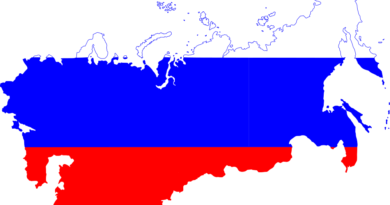Analysis | Russia Is Right: The U.S. Is Waging a Proxy War in Ukraine
By Hal Brands | Bloomberg,
The war in Ukraine isn’t just a conflict between Moscow and Kyiv, Russian Foreign Minister Sergei Lavrov recently declared. It is a “proxy war” in which the world’s most powerful military alliance, the North Atlantic Treaty Organization, is using Ukraine as a battering ram against the Russian state.
Lavrov is one of the most reliable mouthpieces for President Vladimir Putin’s baseless propaganda, but in this case he’s not wrong. Russia is the target of one of the most ruthlessly effectively proxy wars in modern history. And the less U.S. officials say about it, the better.
Proxy wars are longstanding tools of great-power rivalry because they allow one side to bleed the other without a direct clash of arms. During the Cold War, the Soviet Union bled the U.S. by supporting communist proxies in Korea and Vietnam.
The U.S. got revenge in Afghanistan and Nicaragua during the 1980s, supporting anticommunist insurgents who killed Soviet troops or destabilized Moscow’s clients. America would “do to the Soviets what they have been doing to us,” said National Security Council official Richard Pipes. “At a very low cost … we can make it very hard for them.”
The key to the strategy is to find a committed local partner — a proxy willing to do the killing and dying — and then load it up with the arms, money and intelligence needed to inflict shattering blows on a vulnerable rival. That’s just what Washington and its allies are doing to Russia today.
Ukrainian forces are nothing if not committed; they have been willing, in many cases, to fight to the last man. They have proved themselves far more effective than even the U.S. intelligence community anticipated when the invasion began. Putin’s ill-conceived aggression has left Russia in a terribly exposed position, and the Kyiv government and its supporters have no intention of letting Moscow escape the trap.
Ukraine has used drones, antitank weapons and other tools provided by the U.S. and European countries to chew up Russian units. Although the figures are inexact, it appears that Moscow has suffered over 10,000 deaths and lost at least 3,500 vehicles in this war. Western governments have delivered the money to keep Kyiv in business and the intelligence it has used to spoil Russia’s attacks — and even, reportedly, to target its generals. (U.S. officials have denied, plausibly enough, that they are providing Ukraine with intelligence with the express purpose of killing Russian generals, but they have confirmed that they are providing Ukraine with a wide range of information that it decides how to use.)
For NATO, the payoff has been damaging some of the most important parts of the Russian military — its ground and mechanized forces, its airborne units, its special operations forces — so badly that it may take them years to recover. America’s goal is to “weaken” Russia, Secretary of Defense Lloyd Austin has acknowledged; the only way to deal with a rogue regime is to reduce its capacity for harm.
Don’t expect Moscow’s position to improve. Its offensive in eastern Ukraine is proceeding lethargically. Ukraine is getting better-armed as the war goes on, while Russia has badly depleted its stocks of weapons and been reduced to throwing already weakened units back into the line. Putin hoped to break the Ukrainian state; he may break his own army instead.
That would be a coup for the democratic world, but getting there will require some rhetorical discipline. One reason the public knows so much about Western support for Ukraine is because the U.S. government has been leaking like crazy, divulging sensitive information about the role American-provided intelligence has played in targeting the Russian brass and sinking the flagship of Moscow’s Black Sea fleet. This not-for-attribution bragging is bad news.
The way to wage a proxy war is to maintain a conspiracy of silence. The target state is more likely to refrain from retaliating if the other side can resist taking a victory lap. During the 1950s, for instance, the U.S. and the Soviet Union both suppressed the news that Soviet pilots were flying combat missions over North Korea as a way of keeping this limited confrontation under wraps and within bounds.
So far, the U.S. and its allies have been very effective at coercing Putin’s Russia. They have helped Ukraine kill vast numbers of Russian soldiers — more than Moscow lost in its decade-long quagmire in Afghanistan — while simultaneously deterring Putin from striking NATO or otherwise retaliating militarily against his tormentors. There is no good reason to destabilize this fragile equilibrium by taunting a leader who on Monday claimed that NATO had been planning a preemptive strike against Russia and compared this conflict to World War II.
Thanks to Ukraine’s incredible resistance, the U.S. and its friends have put Putin on the wrong end of a brutal proxy war. Now Washington just needs to shut up about it.
More From Bloomberg Opinion:
• The Next Front in the Ukraine War Will Be on the Black Sea: James Stavridis
•
As Putin Gets Desperate, U.S. Should Remember Pearl Harbor: Hal Brands
• Putin’s Parades Can’t Hide a Missing Victory: Clara Ferreira Marques
This column does not necessarily reflect the opinion of the editorial board or Bloomberg LP and its owners.
Hal Brands is a Bloomberg Opinion columnist. The Henry Kissinger Distinguished Professor at Johns Hopkins University’s School of Advanced International Studies, he is author, most recently, of “The Twilight Struggle: What the Cold War Teaches Us About Great-Power Rivalry.”
More stories like this are available on bloomberg.com/opinion
©2022 Bloomberg L.P.


